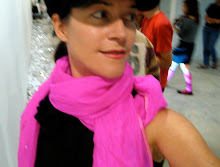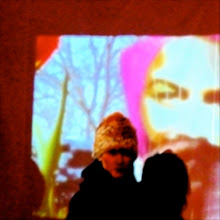 While learning about the creative possibilities of my Garmin GPS I began to experiment. I wanted to write big messages and began immediately after the desired technology caught up to my ideas. For my first experiment I created an alphabet along the beach in Krabi, Thailand. Halfway through I realized it was backwards. The scale was enormous but not a typeface I wanted to continue in Illustrator.
While learning about the creative possibilities of my Garmin GPS I began to experiment. I wanted to write big messages and began immediately after the desired technology caught up to my ideas. For my first experiment I created an alphabet along the beach in Krabi, Thailand. Halfway through I realized it was backwards. The scale was enormous but not a typeface I wanted to continue in Illustrator.

 What I gleaned from this was the tide and the topography affect the ability to carry out the task. These are walked, I mean, I walk up and down and back and forth on the beach, imagining what the letter will look like from a plane above.
What I gleaned from this was the tide and the topography affect the ability to carry out the task. These are walked, I mean, I walk up and down and back and forth on the beach, imagining what the letter will look like from a plane above. 
 It's pretty amusing to the people sitting and relaxing at the beach bars. I was asked if I was treasure hunting, lost, in need of help—when i answered that i was writing it really made for instant conversations with very curious questions. After the slightly successful alphabet, i moved on to bigger and grander ideas. I had a quote that i wanted to write along the other side of the beach, ideal for the location, so it became a site specific piece of walked poetry:
It's pretty amusing to the people sitting and relaxing at the beach bars. I was asked if I was treasure hunting, lost, in need of help—when i answered that i was writing it really made for instant conversations with very curious questions. After the slightly successful alphabet, i moved on to bigger and grander ideas. I had a quote that i wanted to write along the other side of the beach, ideal for the location, so it became a site specific piece of walked poetry: 
May the tide be soon enough on high to keep our abstract verse from being dry
— Robert Frost, Etherealizing.


I also discovered en route that script was far easier to walk than a serif or sans serif typeface. since my track was always being recorded i could relax in general within one word. when it came to word spacing i leapt quickly (since there is a time factor in this process of being recorded) to the next word. in general the legibility of this improved dramatically.
The next location was in Bintan, Indonesia. I researched the location and was really drawn to the historical drama of the Sultan of Malacca (Malaysia), Mahmud Shah, who fled the Portuguese and escaped to Bintan, bringing with him Islam to Indonesia. The survival and adaptability of a man, who was probably one of the richest on the planet in his day—the kind of the spice trade route—really intrigued me. He lives on through the religion, Indonesia has the largest Muslim population on the planet. That combined with the nature of this kind of writing, and the gorgeous location (we were staying in a resort on the island) led to this quote (roughly of the same period):
 This led to another 'walked thought' based on my experiences in Angkor Wat. Angkor is extraordinary. but it is also so incredibly fragile, Siem Reap depending so heavily on it's past for basic survival now. I was overwhelmed by the scale of the space, and by the ruins of boulders tumbling down everywhere. I'd also spent a day exploring Tonlé Sap which geographically explained the location of the Angor ruins, such a futile source of nourishment, but today surrounded by impoverished communities dependent on weather and tourism. I hired a boat and explored the floating villages of Vietnamese and Cham communities and this influenced my quote:
This led to another 'walked thought' based on my experiences in Angkor Wat. Angkor is extraordinary. but it is also so incredibly fragile, Siem Reap depending so heavily on it's past for basic survival now. I was overwhelmed by the scale of the space, and by the ruins of boulders tumbling down everywhere. I'd also spent a day exploring Tonlé Sap which geographically explained the location of the Angor ruins, such a futile source of nourishment, but today surrounded by impoverished communities dependent on weather and tourism. I hired a boat and explored the floating villages of Vietnamese and Cham communities and this influenced my quote:
 I like the way i can merge my love for walking and reading and archaeology and poetics into a space. I also enjoy the invisibility of the message. I know what I'm doing, but no one else has a clue. There is so much potential in that. Peace signs in war zones, poison signs in toxic waste lands. it's an open palette.
I like the way i can merge my love for walking and reading and archaeology and poetics into a space. I also enjoy the invisibility of the message. I know what I'm doing, but no one else has a clue. There is so much potential in that. Peace signs in war zones, poison signs in toxic waste lands. it's an open palette.
Through these experiments I was asked to show at last year's ISEA conference here in Singapore. I met some fascinating people, Ema Ota of Dislocate Tokyo was one I'd like to show with in the future.
When viewed in google earth the quote is often shown with the tide in, and so the abstract verse is rarely dry. When written, the descenders of the ‘y’, ‘g’ & ‘p’ touched the water. The reaction of onlookers was never dry, nor the intention of the project, and so the walk (over 10km) physically expressed the location, the quotation and used the technology in an unconventional yet clear way.


I also discovered en route that script was far easier to walk than a serif or sans serif typeface. since my track was always being recorded i could relax in general within one word. when it came to word spacing i leapt quickly (since there is a time factor in this process of being recorded) to the next word. in general the legibility of this improved dramatically.
The next location was in Bintan, Indonesia. I researched the location and was really drawn to the historical drama of the Sultan of Malacca (Malaysia), Mahmud Shah, who fled the Portuguese and escaped to Bintan, bringing with him Islam to Indonesia. The survival and adaptability of a man, who was probably one of the richest on the planet in his day—the kind of the spice trade route—really intrigued me. He lives on through the religion, Indonesia has the largest Muslim population on the planet. That combined with the nature of this kind of writing, and the gorgeous location (we were staying in a resort on the island) led to this quote (roughly of the same period):
My trade and my art is living. He who forbids me to speak about it according to my sense, experience, and practice, let him order the architect to speak of buildings not according to himself but according to his neighbor; according to another man’s knowledge, not according to his own.— Michel de Montaigne (1533–1592) “Of Practice,” The Essays (Les Essais), bk. II, ch. 6, Abel Langelier, Paris (1595).

 This led to another 'walked thought' based on my experiences in Angkor Wat. Angkor is extraordinary. but it is also so incredibly fragile, Siem Reap depending so heavily on it's past for basic survival now. I was overwhelmed by the scale of the space, and by the ruins of boulders tumbling down everywhere. I'd also spent a day exploring Tonlé Sap which geographically explained the location of the Angor ruins, such a futile source of nourishment, but today surrounded by impoverished communities dependent on weather and tourism. I hired a boat and explored the floating villages of Vietnamese and Cham communities and this influenced my quote:
This led to another 'walked thought' based on my experiences in Angkor Wat. Angkor is extraordinary. but it is also so incredibly fragile, Siem Reap depending so heavily on it's past for basic survival now. I was overwhelmed by the scale of the space, and by the ruins of boulders tumbling down everywhere. I'd also spent a day exploring Tonlé Sap which geographically explained the location of the Angor ruins, such a futile source of nourishment, but today surrounded by impoverished communities dependent on weather and tourism. I hired a boat and explored the floating villages of Vietnamese and Cham communities and this influenced my quote:These fragments I have shored against my ruins
— T.S. Eliot, The Waste Land: “What the Thunder Said”

— T.S. Eliot, The Waste Land: “What the Thunder Said”

I had spent three days already exploring the site and found only one location possible for walking type. It was along the edge of the eastern baray leading up to the Bayon. This was my first attempt at writing on soil: dusty dry, weedy. I imagined that it was once water, or along the shore of the artificial lake. In reality I ended up bumping into a tuk tuk parking area and had to write and navigate the word 'ruins' around the crowd. it was not easy, and that made the quote feel even more appropriate.
 I like the way i can merge my love for walking and reading and archaeology and poetics into a space. I also enjoy the invisibility of the message. I know what I'm doing, but no one else has a clue. There is so much potential in that. Peace signs in war zones, poison signs in toxic waste lands. it's an open palette.
I like the way i can merge my love for walking and reading and archaeology and poetics into a space. I also enjoy the invisibility of the message. I know what I'm doing, but no one else has a clue. There is so much potential in that. Peace signs in war zones, poison signs in toxic waste lands. it's an open palette.Through these experiments I was asked to show at last year's ISEA conference here in Singapore. I met some fascinating people, Ema Ota of Dislocate Tokyo was one I'd like to show with in the future.




No comments:
Post a Comment